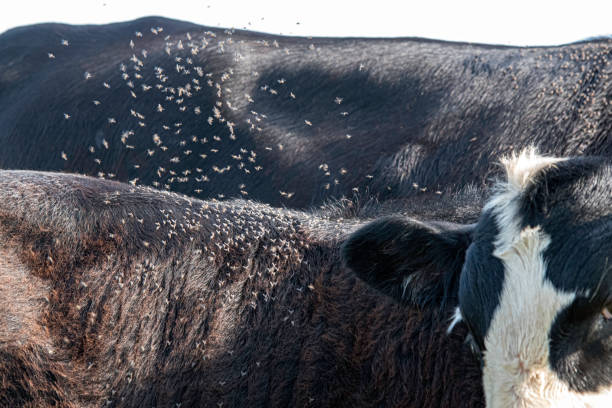
CONTROL OF PARASITIC DISEASES DURING MONSOON
Dr. Pratistha Shrivastava
Assistant Professor, Dept. of Veterinary Parasitology, Institute of Veterinary Science & Animal Husbandry, SOADU, Bhubaneswar Odisha.
Mail id : shrivastavapratistha25@gmail.com
Introduction : The control of the parasite relies on three factors: (i) Eliminating snails that act as intermediate hosts (Endoparasites), (ii) Treating infected livestock, and (iii) Managing wild mammals that serve as reservoir hosts.
- Snails, which serve as intermediate hosts, are commonly found in shallow waters and can migrate long distances across mud and wet pastures.
- Their population can be reduced through proper drainage and removal of vegetation they feed on. However, such measures are often impractical over large areas due to prohibitive costs.
- Snails can also be eliminated using copper sulphate or other molluscicides like sodium pentachlorophenate, though these are typically expensive.
- Copper sulphate, when diluted to 1 part in 150 million parts of water, can kill snails within about 12 hours. Repeated applications are necessary as not all snails may be killed in the first treatment, and their eggs are usually unaffected. It is also advisable to clean weeds, as the chemical’s effectiveness decreases with increasing water alkalinity.
- While the recommended dosage of copper sulphate is highly toxic to fish, it poses no significant risk to humans and domesticated animals.
- Di-nitro-o-cyclohexyl-phenol (DCPH), at a concentration of 3 to 5 parts per million in water, is even more effective than copper sulphate but is also more expensive and toxic to fish. Other molluscicides, such as pentachlorophenol and 2-4, dinitro-6-phenylphenol, are also effective.
- It’s important to note that snails are prolific breeders; a single snail can produce between 25,000 and 160,000 offspring within just two generations. Therefore, in practice, the goal should be to reduce snail numbers rather than eliminate them completely. Additional measures, such as biological control using birds and fish, are also recommended.
- Control of ectoparasitic infestations: Flies and mosquitoes act as repellents rather than insecticides. Ectoparasiticides, drugs used to kill ectoparasites, are commercially available for veterinary use in both topical and parenteral forms.
Biological control of ticks : Bacteria : Proteus mirabilis is pathogenic to Dermacentor andersoni. Bacteria also attack Amblyomma hebraeum, Hyalomma marginatum and Rhipicephalus eversti . The bacterium Cedecea lapagei is pathogenic to Boophilus microplus.
Fungi: Beauveria bassiana, Metarhizium anisopliae kills several stages of arthropods.
Entomopathogenic nematodes (EPNs) of the families Heterorhabditidae and Steinernematidae kills ticks.
Ticks, lice and ked flies infestation and Lousiness in farm animals, pets and poultry
Cypermethrin Liquid (10% w/v)
As body spray or plunge dips @ 1 ml/l in water or 5 ml/l in water as backline spray or 20 ml/l in water for poultry house spray. Shampoo 1%w/v @ 5 ml/l of water as external application in pets.
Coumaphos wetable powder(50% w/v)-As body spray @ 0.5 g/l in water for lice, 1- 2 g/l water for ticks.
Amitraz solution (12.5% w/v)- As body spray @ 2-4ml/l in water or 5% w/v solution @ 6ml/lit water. 9% Amitraz collar for dogs.
Carbaryl powder (5%) – As dust, Liquid (10% w/v) – spray or wash.
Ivermectin injection (1 %w/v) – 0.2 mg/kg bw SC.
Oral solution (0.08% w/v) – 0.2 mg/kg bw PO.
Pour-on (0.5% w/v) – 2.5 ml/10kg bw, applied evenly on along midline of back from neck to tail
Myiasis or maggot infestations – Ivermectin/ Doramectin / Moxidectin
Flea allergy dermatitis in dogs and cats
Flumethrin – Pour-on preparations@1 mg active ingredient/kg bw or 0.003% whole body spray.
Pyrethrins- 1% dips for dogs and cats (>12 weeks).
Control by various ways
These are certain ways by which endoparasitic and ectoparasitic diseases can be controlled.


